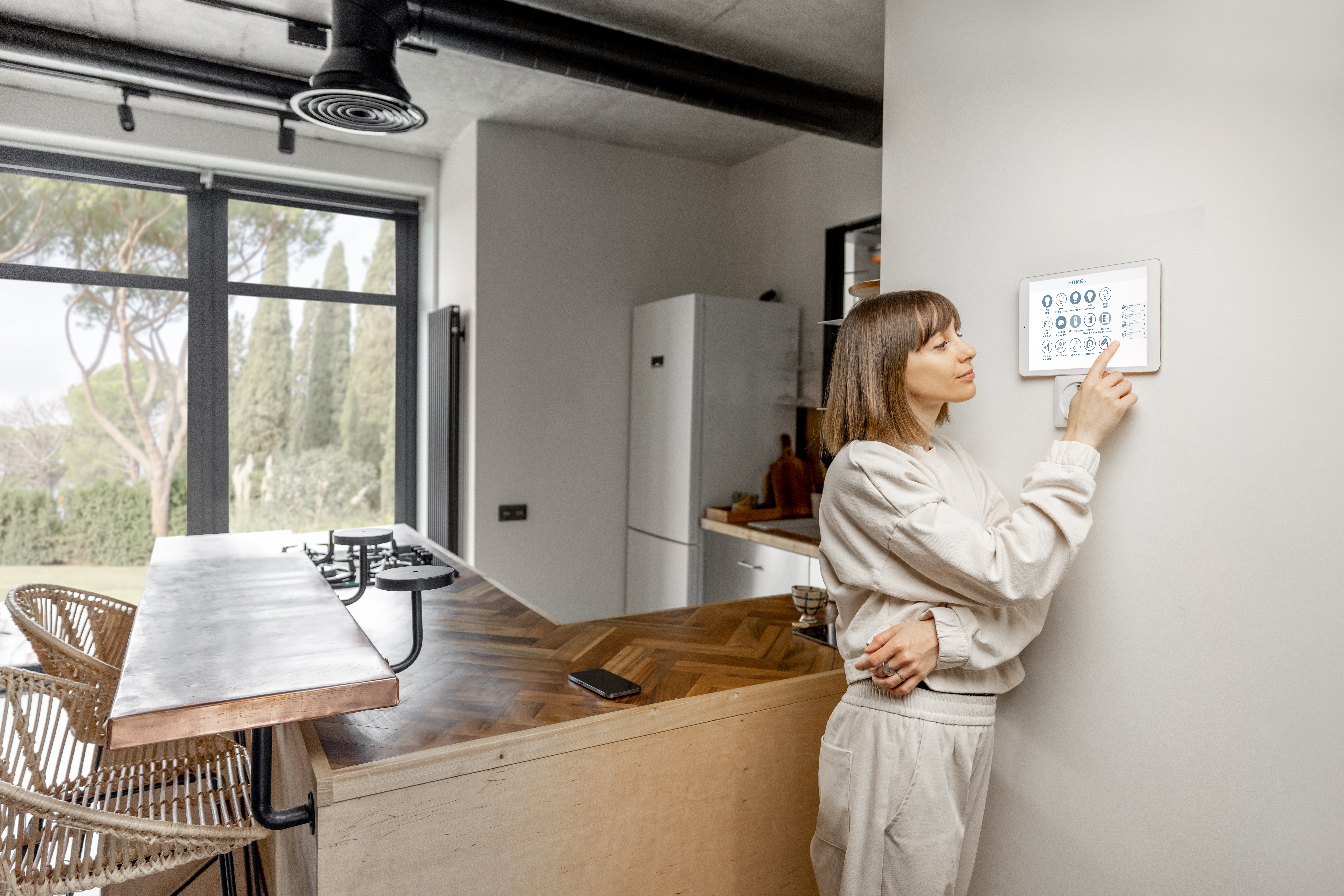How to Properly Do Rental Inspections (and How Often)
Rental inspections are a landlord’s and tenant’s best friend. They help make sure that your property is always in good standing, catch minor problems before they grow into major ones, and identify responsibility for those problems between you and your renters.
Below is a guide to help you understand how often to conduct rental inspections in Canada, how to conduct them properly, and who should be conducting them.
Do you have a rental property and need help finding a tenant? Rhenti’s digital toolbox helps you find the right tenant in the fastest way possible.
How often should I do a home inspection?
At the very least, conduct an inspection before and after a new tenant moves in. Routine inspections can be conducted outside of these times, but only where it makes sense (more on this below).
Before the tenant moves in:
An inspection before a tenant moves in helps you understand the condition of your unit prior to them living there.
This sets a baseline, which you can compare to when the tenant moves out to clearly see how their occupancy affected your unit’s condition. To make this comparison easier, take photos or videos of your unit before they move in.
Pre-move-in inspections also help you catch and fix any flaws before someone moves in, helping you start off your landlord-tenant relationship on the right foot.
Read more tips on how to prepare and welcome a new tenant into your rental property.
After the tenant moves out:
After a tenant has fully moved out, conduct an inspection as quickly as possible - ideally within 48 hours of them leaving. Waiting too long can lead to scenarios where tenants claim that damage wasn’t done by them.
That said, it’s important to wait until after they’re fully moved out, as damages can happen during the move-out process.
For example, scratched floors and holes in walls can happen when big heavy objects are being moved around during the hustle and bustle of a move. Similarly, furniture can often hide pre-existing damage that has happened before the move.
Routine inspections:
Ontario law doesn’t prescribe a specific number of times a landlord is permitted to enter their rental property or do an inspection, but the law does dictate it must be done within reason, so common sense must be used here.
We recommend doing a routine inspection at least once a year, especially if your rental property is susceptible to damage during specific seasons.
Here are some examples of when you might want to conduct routine inspections throughout the year:
- Late winter and early spring: When snow and ice begin to thaw and there is more precipitation.
- Fall: As the weather starts to cool down, you can get a better sense of how well the heating system is working, and whether any cold weather-related issues may arise.
- Before and after major weather events: If you live in an area that is prone to extreme weather events such as hurricanes or tornadoes, it's a good idea to schedule a home inspection before and after the season begins. This can help identify any vulnerabilities in your home that could put you at risk during a storm, and assess damage after.
How to prepare your tenant for an inspection
Tenants must be given 24 hours written notice and a time frame of when the inspection will be taking place. This can either be done through a hand-delivered or mailed letter, or via email (depending on what is stipulated regarding communication in your rental lease).
Whether or not the tenant is there is optional. If photos are being taken of the home, identifiable personal items should not be included in the photos. Give your tenant a chance and notice to remove/store any personal items they have out by letting them know photos will be taken during the inspection.
This is also a good opportunity to ask them if there are any potential problem areas the inspector should look at. Since they live in the home, they might be able to identify issues that are not caught during the inspection.
What to expect during the inspection process
There are different calibers of home inspections and your expectations should be set based on the type of inspection you’re doing.
An inspection conducted by a professional home and property inspector, either before you buy a property or if you are having it appraised for value (perhaps in preparation for sale), will be a lot different than a walk-through you conduct before and after someone moves in.
If a professional is inspecting your property, it will likely be more technical and intrusive, and will evaluate the following:
Attic:
- Indicators of water damage and/or leaks
- Lack of insulation
- Proper ventilation
- Pests/rodents are not living in the attic
Basement:
- Foundation, floors, and walls are solid
- Insulation is not lacking or damaged
- No water damage
Thinking about renting out your basement or attic? Check out these helpful tips on how to convert your basement or attic into a rental unit.
Structural elements of the home:
- No leaking roofs, cracked walls/ceilings, and the foundation is in good shape
- Ceilings: No signs of water damage, cracks, and the ceiling is level
Windows:
- Windows open and close properly, are aligned, not damaged, and the frame has caulking in place
Roof:
- No loose, damaged or missing shingles, chimney is not damaged, gutters/eavestroughs work and are not clogged, and vents are clear
Bathrooms/Plumbing systems:
- The plumbing: toilet, sinks, faucets, bathtub, and shower work
- The exhaust fan works
- Light fixtures work
- Pipes are not damaged and water runs at the correct temperature
Doors and wood trim:
- Frames are secure and trim is in good shape
HVAC system:
- Air conditioner works
- Water heater works
- Furnace, thermostat, heat pumps, and ducts work
- Chimney and fireplace are not damaged
Home exterior:
- Siding, bricks, stucco, and paint are not damaged
- Inspect the yard to ensure there is good drainage and no leaking septic tanks
Electrical systems:
- Circuit breakers and grounding is up to code, smoke detectors work, exhaust fans, and light fixtures work
Garage:
- Door or garage opener works, framing, ceiling, walls, floors, and foundation are not damaged
Appliances:
- Stove, fridge, dishwasher, washer, and dryer works
For an inspection done by a professional, you need to brace yourself for the possibility of more costly damage in the home such as structural and wiring issues, mold, and problems with the roof.
The older your home is, and the more invasive the inspection, the more likely it is that problems will surface. Damage to your property is hard to avoid, so here’s what to do when a condo you are renting out in Ontario is damaged.
If you want to do a simple walk-through before and after someone moves in to assess the state of the home, this is something that is more likely to turn up cosmetic issues rather than bigger structural ones.
As mentioned, we always recommend taking pictures during both phases of inspection so you can compare general wear and tear versus more severe damage.
If this is the kind of inspection you are doing, make note of the following before and after they move in:
Living room/bedroom(s):
- Flooring
- Walls and ceilings
- Windows
- Window coverings (e.g. blinds)
- Doors and doorframes
- Baseboards and moldings
- Light fixtures and light switches
- Existing furniture
- Doors
- Closet doors and tracks
Kitchen:
- Flooring
- Windows
- Window coverings (e.g. blinds)
- Appliances: Stove/burners, oven, broiler, hood, range, fridge/freezer, dishwasher, microwave, other appliances
- Light fixtures
- Doors
- Cabinets
- Drawers
- Counters/kitchen island
- Sink, faucet, garbage disposal
- Other
- Sink/under the sink
- Baseboards and molding
Bathroom:
- Walls and ceiling
- Flooring
- Windows
- Window coverings (e.g. blinds)
- Doors
- Cabinets/mirrors/drawers
- Counters
- Sink, faucet, under the sink
- Toilet paper holder
- Towel racks
- Temperature and pressure of sinks and showers
- Baseboards and molding
Other areas:
- Walls and ceiling
- Flooring
- Windows
- Window coverings
- Doors and locks located on the exterior of the house
- Light fixtures/light switches
- Closet doors and tracks
- Baseboards and molding
- Any existing furniture
- Doorbell or knocker
- Lock on mailbox
- Outdoor spaces: backyard, deck, patio
- Outdoor lights
- Other
Here’s a great rental walk-through checklist to use during this kind of inspection.
Who should do the inspection?
Who you choose to do your inspection depends on what the goals of the inspection are.
If it’s to assess cosmetic and minor damages you can likely do the inspection yourself. If you are looking to assess the extent of more severe damages e.g. after a flood, before buying a home, or to appraise the value of your home, a professional home inspector should be called in.
When deciding on a professional home inspector, it’s always a good idea to check to see if they are part of the Canadian Association of Home and Property Inspectors (CAHPI).
During the initial move-in inspection, regardless of who is conducting the inspection, tenants and landlords should always be present to make sure everyone’s on the same page.
Inspections represent just one of the many responsibilities that landlords have to worry about. Make your life easier and start finding and signing the right renters faster with Rhenti's powerful and automated lead-to-lease software. Get started with Rhenti today!
The blog posts on this website are for the purpose of general introductory information. They can’t serve as an opinion or professional advice. Speak to a professional before making decisions related to your circumstances.


